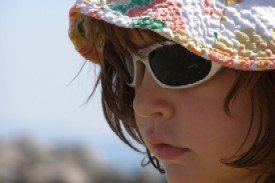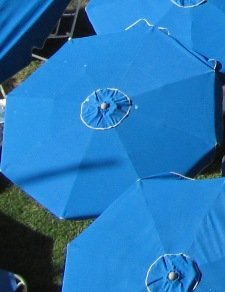Kids Sun Protection Clothing
Sun Protection is a fact of life™
Kids Sun Protection Clothing: A Guide for Parents
Kids Sun Protection Clothing: A Guide for Parents
Sun exposure is essential for the health and well-being of children, as it helps them produce vitamin D, regulate their circadian rhythms, and boost their mood.
However, too much sun exposure can also pose serious risks, such as sunburn, skin damage, eye problems, and even skin cancer.
Therefore, it is important for parents to protect their children from the harmful effects of ultraviolet (UV) radiation, especially during the summer months when the sun is strongest.

One of the most effective ways to shield children from UV rays is to dress them in sun protection clothing.
Sun protection clothing is specially designed to block or absorb UV radiation, reducing the amount of sun that reaches the skin.
Sun protection clothing can be made of different materials, such as cotton, polyester, nylon, or spandex, and can have different features, such as tight weave, dark colors, long sleeves, collars, hats, or sunglasses.

Sun protection clothing can be classified according to its ultraviolet protection factor (UPF), which measures how much UV radiation can pass through the fabric.
The higher the UPF, the more protection the clothing provides. For example, a shirt with a UPF of 50 allows only 1/50th of the UV radiation to reach the skin, while a shirt with a UPF of 10 allows 1/10th of the UV radiation to reach the skin.
The Skin Cancer Foundation recommends that children wear clothing with a UPF of at least 30.

However, not all sun protection clothing is created equal. Some factors that can affect the UPF of clothing include:
- The type of fabric: Natural fibers, such as cotton or linen, tend to have lower UPF than synthetic fibers, such as polyester or nylon. This is because natural fibers are more porous and allow more UV rays to pass through. Synthetic fibers are more tightly woven and reflect more UV rays.
- The color of the fabric: Darker colors tend to have higher UPF than lighter colors. This is because darker colors absorb more UV rays and prevent them from reaching the skin. Lighter colors reflect more UV rays and allow them to reach the skin.
- The weight and thickness of the fabric: Heavier and thicker fabrics tend to have higher UPF than lighter and thinner fabrics. This is because heavier and thicker fabrics have more layers and density that block or absorb more UV rays.
- The fit and style of the clothing: Looser and longer clothing tends to have higher UPF than tighter and shorter clothing. This is because looser and longer clothing covers more surface area of the skin and reduces the exposure to UV rays. Tighter and shorter clothing exposes more surface area of the skin and increases the exposure to UV rays.
- The condition and age of the clothing: Newer and cleaner clothing tends to have higher UPF than older and dirtier clothing. This is because newer and cleaner clothing retains its original quality and features that provide UV protection. Older and dirtier clothing may lose its quality and features due to wear and tear, washing, stretching, or fading.
Therefore, when choosing sun protection clothing for children, parents should consider these factors and look for labels that indicate the UPF rating of the clothing.
Parents should also remember that sun protection clothing is not a substitute for other sun safety measures, such as applying sunscreen, seeking shade, avoiding peak sun hours, and wearing sunglasses.
By combining sun protection clothing with these other measures, parents can ensure that their children enjoy the sun safely and healthily.
Conclusion
By combining sun protection clothing with these other measures, parents can ensure that their children enjoy the sun safely and healthily.
Join in and share your experience or story. How?
Simply click here to go to Sun Protection Reviews.








New! Comments
Have your say about what you just read! Leave me a comment in the box below.